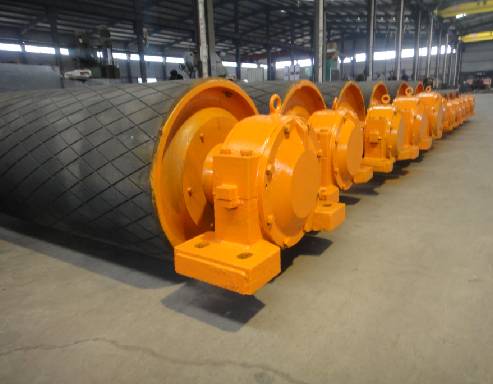 Afrikaans
Afrikaans  Albanian
Albanian  Amharic
Amharic  Arabic
Arabic  Armenian
Armenian  Azerbaijani
Azerbaijani  Basque
Basque  Belarusian
Belarusian  Bengali
Bengali  Bosnian
Bosnian  Bulgarian
Bulgarian  Catalan
Catalan  Cebuano
Cebuano  Corsican
Corsican  Croatian
Croatian  Czech
Czech  Danish
Danish  Dutch
Dutch  English
English  Esperanto
Esperanto  Estonian
Estonian  Finnish
Finnish  French
French  Frisian
Frisian  Galician
Galician  Georgian
Georgian  German
German  Greek
Greek  Gujarati
Gujarati  Haitian Creole
Haitian Creole  hausa
hausa  hawaiian
hawaiian  Hebrew
Hebrew  Hindi
Hindi  Miao
Miao  Hungarian
Hungarian  Icelandic
Icelandic  igbo
igbo  Indonesian
Indonesian  irish
irish  Italian
Italian  Japanese
Japanese  Javanese
Javanese  Kannada
Kannada  kazakh
kazakh  Khmer
Khmer  Rwandese
Rwandese  Korean
Korean  Kurdish
Kurdish  Kyrgyz
Kyrgyz  Lao
Lao  Latin
Latin  Latvian
Latvian  Lithuanian
Lithuanian  Luxembourgish
Luxembourgish  Macedonian
Macedonian  Malgashi
Malgashi  Malay
Malay  Malayalam
Malayalam  Maltese
Maltese  Maori
Maori  Marathi
Marathi  Mongolian
Mongolian  Myanmar
Myanmar  Nepali
Nepali  Norwegian
Norwegian  Norwegian
Norwegian  Occitan
Occitan  Pashto
Pashto  Persian
Persian  Polish
Polish  Portuguese
Portuguese  Punjabi
Punjabi  Romanian
Romanian  Russian
Russian  Samoan
Samoan  Scottish Gaelic
Scottish Gaelic  Serbian
Serbian  Sesotho
Sesotho  Shona
Shona  Sindhi
Sindhi  Sinhala
Sinhala  Slovak
Slovak  Slovenian
Slovenian  Somali
Somali  Spanish
Spanish  Sundanese
Sundanese  Swahili
Swahili  Swedish
Swedish  Tagalog
Tagalog  Tajik
Tajik  Tamil
Tamil  Tatar
Tatar  Telugu
Telugu  Thai
Thai  Turkish
Turkish  Turkmen
Turkmen  Ukrainian
Ukrainian  Urdu
Urdu  Uighur
Uighur  Uzbek
Uzbek  Vietnamese
Vietnamese  Welsh
Welsh  Bantu
Bantu  Yiddish
Yiddish  Yoruba
Yoruba  Zulu
Zulu Mounting Brackets for Conveyor Systems to Enhance Stability and Performance
Conveyor Mounting Brackets Essential Components for Efficient Material Handling Systems
In modern manufacturing and logistics, conveyor systems have become integral in streamlining processes, enhancing productivity, and minimizing labor costs. Among the various components that contribute to the efficiency and functionality of conveyor systems, conveyor mounting brackets play a crucial role. These brackets serve as the backbone of conveyor setups, providing essential support and stability necessary for the smooth operation of conveyor belts and their associated machinery.
Understanding Conveyor Mounting Brackets
Conveyor mounting brackets are specialized supports that secure the various components of a conveyor system in place. They are designed to accommodate different types of conveyors, including belt conveyors, roller conveyors, and modular conveyors. These brackets can be made from a variety of materials, typically including steel, aluminum, and plastic, each offering distinct advantages in terms of durability, weight, and resistance to corrosion.
Importance of Proper Mounting
The installation of conveyor mounting brackets is a critical step that can significantly influence the performance of the entire conveyor system. Properly mounted brackets ensure that the conveyor structure remains stable under the weight of materials being transported, minimizing the risk of misalignment or sagging that could lead to operational disruptions. Furthermore, well-secured brackets help maintain the alignment of the conveyor belt, which is essential for preventing premature wear and tear, reducing maintenance costs, and prolonging the lifespan of the equipment.
Design Considerations
conveyor mounting brackets

When selecting or designing conveyor mounting brackets, several factors must be taken into consideration. The load capacity of the brackets is paramount; they must be able to withstand the weight of the materials being transported without bending or breaking. Additionally, the bracket design should allow for easy adjustments during installation to accommodate varying conveyor heights and configurations.
Another critical aspect is the ease of installation and maintenance. Brackets should be designed in such a way that they can be quickly mounted and, if necessary, removed for maintenance. This is particularly valuable in environments where machinery is frequently changed or upgraded.
Types of Conveyor Mounting Brackets
There are several types of conveyor mounting brackets, each suited for different application needs
1. L-Brackets These are the most common type, providing a strong right-angle connection that is ideal for supporting horizontal and vertical components. 2. Angle Brackets Useful for creating corners in conveyor systems; they offer excellent reinforcement for structure. 3. Tension Brackets These are used to maintain the tension of a conveyor belt, ensuring smooth operation and extending the life of the belt. 4. Adjustable Brackets Designed to be versatile, these allow for height adjustments and are ideal for systems that may require reconfiguration.
Conclusion
In conclusion, conveyor mounting brackets are critical components of material handling systems that should not be overlooked. Their role in ensuring stability, alignment, and efficiency is paramount to the effective operation of conveyor systems across various industries. By selecting the right type of mounting brackets and ensuring their proper installation, businesses can significantly enhance their operational performance, reduce downtime, and optimize their material handling processes. As industries continue to innovate and evolve, investing in high-quality conveyor mounting brackets will remain a prudent decision for maintaining a competitive edge.
-
Revolutionizing Conveyor Reliability with Advanced Rubber Lagging PulleysNewsJul.22,2025
-
Powering Precision and Durability with Expert Manufacturers of Conveyor ComponentsNewsJul.22,2025
-
Optimizing Conveyor Systems with Advanced Conveyor AccessoriesNewsJul.22,2025
-
Maximize Conveyor Efficiency with Quality Conveyor Idler PulleysNewsJul.22,2025
-
Future-Proof Your Conveyor System with High-Performance Polyurethane RollerNewsJul.22,2025
-
Driving Efficiency Forward with Quality Idlers and RollersNewsJul.22,2025





























